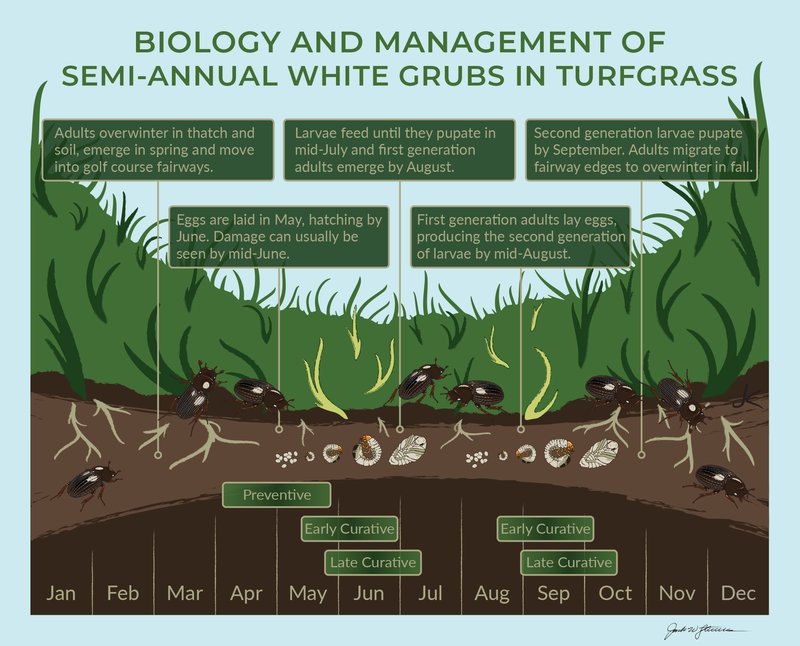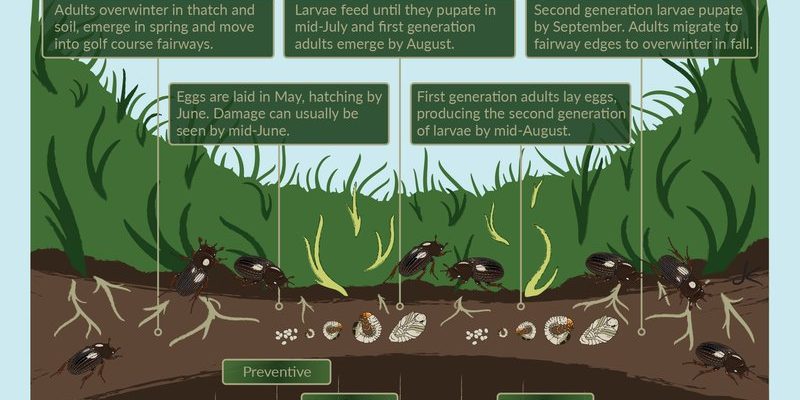
Now, when grub worms start munching on the roots of your grass, it’s like a chain reaction. The grass loses its ability to absorb nutrients and water, causing it to weaken and potentially die. In this article, let’s dig deeper into how grub worms impact turfgrass root systems and what you can do about it—because nobody wants a brown, patchy lawn.
What Are Grub Worms?
Grub worms are the larval stage of various beetles, including the Japanese beetle and the masked chafer. They typically live in the soil and feed on organic matter, but when they run out of options, they turn their attention to grass roots. Picture this: You’ve got a garden party planned, but a gang of aggressive squirrels shows up and starts raiding the buffet. That’s what grub worms do to your turfgrass!
These worms are usually C-shaped, creamy-white in color, and a little under an inch long. You might find them in clusters, digging through the soil and nibbling away at your grass. While they might seem small, their impact on turfgrass can be significant.
How Grub Worms Damage Turfgrass Roots
Grub worms primarily feed on the roots of turfgrass. As these little pests munch away, they disrupt the grass’s ability to absorb water and nutrients. Imagine trying to drink from a straw that’s been pinched closed; that’s similar to what grass goes through when its roots are being damaged.
When grub worms eat the roots, you may notice several symptoms:
- Patchy Areas: Grass may start to turn brown or yellow, creating unsightly patches.
- Easy to Pull Up: If you can easily pull up sections of grass, it indicates root damage.
- Increased Animal Activity: Birds and other animals might come to your yard, digging for grubs, which can add to the damage.
Addressing grub worm infestations quickly is crucial. If left unchecked, they can cause extensive damage to the entire lawn.
Identifying Grub Worm Infestations
The first step in dealing with grub worms is identifying the problem before it escalates. Signs of infestation can sometimes be subtle, so here’s how to check if you’ve got these invaders:
1. **Look for Brown Patches:** Are there areas of your turfgrass that seem to be dying off? This is often the first sign.
2. **Check the Soil:** Use a shovel or a simple garden spade to dig down about six inches in affected areas. If you find more than a few grubs in a small section, it’s time to take action.
3. **Observe Animal Activity:** Increased digging from birds, raccoons, or skunks might indicate grubs are present.
You might be thinking, “Great, now what?” Fortunately, you can take steps to manage these pests.
Preventing Grub Worm Infestations
Prevention is often the best strategy when it comes to managing grub worms. Here are a few proactive steps you can take:
– **Keep Your Lawn Healthy:** Healthy grass is less likely to get attacked. Give your lawn regular fertilization and adequate watering.
– **Aerate Your Lawn:** Aeration allows for better air flow and water absorption, creating a healthier root system that can withstand minor grub worm damage.
– **Maintain Soil pH Levels:** Grub worms prefer certain soil conditions, so test your soil and adjust the pH as needed.
Taking these steps can help create an environment that’s less inviting to grub worms, keeping your lawn lush and vibrant.
Treating Grub Worm Infestations
If you find grub worms in your lawn, it’s time to tackle the situation head-on. Here’s how you can treat them effectively:
1. **Apply Grub Control Products:** Look for products designed specifically for grubs. These usually come in granular or liquid forms and can be applied during the growing season. Follow the instructions carefully to avoid over-application.
2. **Natural Predators:** You can encourage beneficial nematodes or birds, which feed on grubs. Just like inviting friends to help out at that garden party, this can lead to a more balanced ecosystem.
3. **Regular Monitoring:** After treatment, keep checking your lawn. Regular inspections can keep you ahead of any future infestations.
Remember, early intervention is key in managing grub worms effectively.
Grub worms can pose a serious threat to your lawn’s health if not dealt with promptly. By understanding how they affect turfgrass root systems, identifying infestations, and implementing preventive measures, you can maintain a thriving green space.
Think of your lawn as a living thing that requires attention and care—sort of like a pet, if you will. So, take charge, and don’t let those pesky grubs ruin your summer BBQs! With some diligence and the right techniques, you can ensure your lawn stays rich and inviting all season long.

